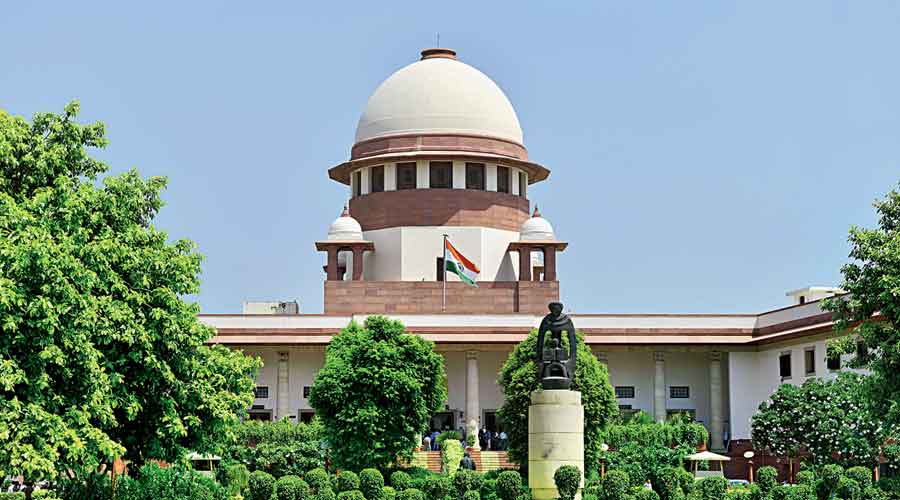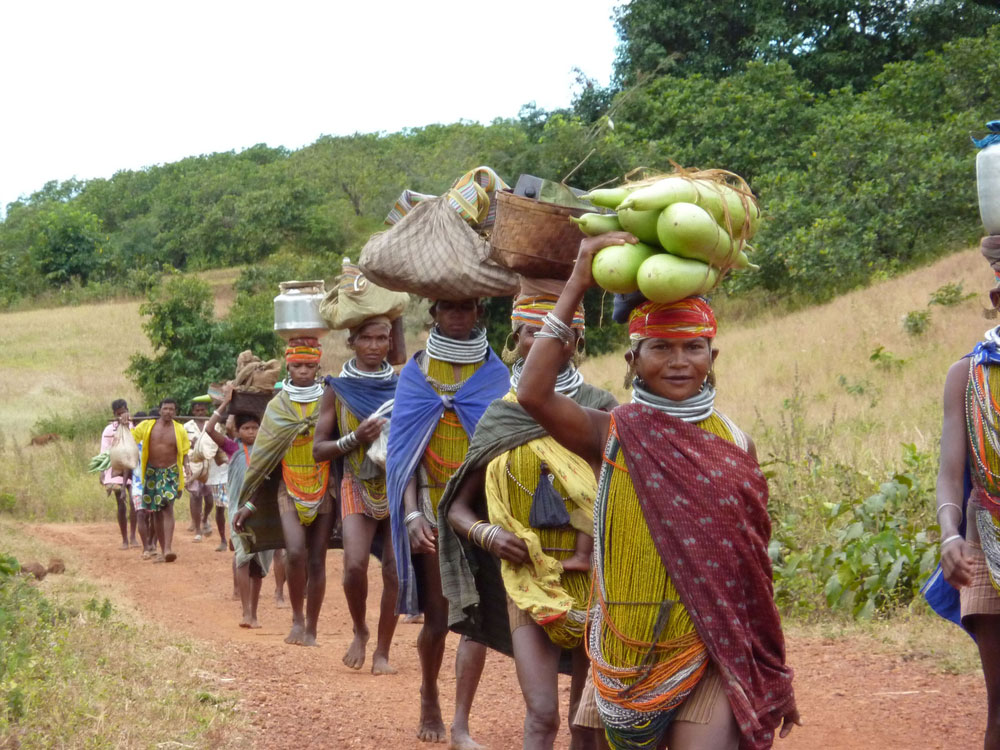The Citizenship (Amendment) Act (CAA) 2019 has sparked a nationwide protest with thousands taking to the streets across the country. Many state governments have already registered their opposition and have announced that they would not implement the Act in their respective territories. These include state governments led by allies of Prime Minister Narendra Modi’s Bharatiya Janata Party (BJP).
Indian citizenship has cut across unclear boundaries of domicile and nationality, presenting a problem to those seeking to define it. Historically, Indian citizenship questions have been covered under two legal tenets – Part II of the Constitution of India and the Citizenship Act of 1955. Since its enactment in 1955, the original Act has undergone several rounds of amendments. It was thrice amended by the Congress-led governments (1986, 1992 and 2005) and twice by the BJP-led governments (2003 and 2015).
The original Act of 1955 regulated the right to citizenship of every individual in India, particularly in the context of post-1947 phase, including the Partition, and the creation of Pakistan, the war against Pakistan that followed immediately and the subsequent cross-border migration. Shuvro Prasun Sarker, author of Refugee Law in India: The Road from Ambiguity to Protection, says the Indian government has struggled with issues of refugees and asylum seekers while granting citizenship by naturalization. These include mass influx of refugees, rehabilitation, urban planning, cost of basic services, obligations to protect indigenous population and pre-existing poverty and stiff competition for the limited resources in the country.
In the case of citizenship by naturalization, Section 6 (1) of 1955 Act states that it can be acquired by a foreigner who has been a resident of India for 12 years, including throughout the period of 12 months immediately preceding the date of application and for 11 years in the aggregate of 14 years preceding the 12 months, and meets other specified criteria. The 1986 amendment required one of the parents (read father) of the applicant to be an Indian citizen. The 1992 amendment clarified that either the father or the mother needed to be an Indian citizen for the children born outside India to qualify for Indian citizenship. Thus this amendment marked an end to an implicit gender discrimination of in the granting of citizenship.
The 2003 amendment inserted a new clause that said that no illegal immigrant would be eligible for Indian citizenship. People who have at any point of time been a citizen of Pakistan and Bangladesh lost their right to citizenship. This created a new category of “doubtful citizens” within the political geography of India. This version of the Act mandated the Indian government to create a National Register of Citizens. Further, it allowed overseas people of Indian origin to register as Overseas Citizens of India (OCI) with restrictions on employment, political and judicial rights. According to Article 9 of Indian Constitution, any person who voluntarily acquires citizenship of any other country shall no longer be an Indian citizen.
The 2005 amendment left the changes made in 2003 untouched. It only emphasized the case of OCI, giving validity to People of Indian Origin (PIO). In 2015, the law was further amended, with the concept of Overseas Citizen of India Cardholder (OCC) introduced to replace and merge both OCI and PIO. This amendment led to changes in the Passport Rules and Foreigner’s Amendment Order to allow non-Muslim refugees to stay back in India even if they entered the country without valid papers.
However, by 2016, discussions had already entered the public domain with regard to a new Citizenship Amendment Bill (CAB). What happened in that one year that made the government think of another major amendment to the citizenship law?
Doubtful versus valid citizenship
Apparently, CAA prioritizes granting of citizenship to persecuted minorities from neighbouring Muslim-majority countries, that is Pakistan, Bangladesh and Afghanistan. Here, it is to be noted that Afghanistan has been the new addition to the earlier list. The religious minorities from these countries include Hindus, Sikhs, Buddhists, Jains, Parsis and Christians. It has clearly blocked out the Muslims from these nations, who would de facto be considered illegal migrants. These two concrete shifts gave rise to large-scale nationwide agitation, not only from Muslims but also from a large section of non-Muslims. Why did the government single out non-Muslim illegal migrants as a special category of refugees?
In 2016, the discussion on CAB first surfaced in the public domain against the backdrop of a mass exodus of Rohingya Muslims from Myanmar to India and neighbouring countries, fear of cross-border terrorism and other forms of violence. Since 9/11, most violence and acts of terrorism across the world have been attributed to Islam and Islamophobia.

Earlier, the Indian State had taken a strong position on migration of people from Bangladesh to West Bengal and other Northeastern states. This migration had already created enough problems for states like Tripura. Now, the Indian government wants to sift out only the Muslims among them.
Citing the Partition in 1947, the present National Democratic Alliance (NDA) government at the Centre has argued that millions of citizens of undivided India belonging to various faiths have been staying in Pakistan and Bangladesh. Union Home Minister Amit Shah went on to say that the constitutions of Pakistan, Afghanistan and Bangladesh provide for a specific State religion, because of which many people belonging to Hindu, Sikh, Buddhist, Jain, Parsi and Christian communities have faced religious persecution in those countries. (This is not entirely true. From its inception in 1971, Bangladesh has been a secular republic except for some years under military rule.) Shah said that India being a land of Hindus should welcome them back.
Sociologist Walter Fernandes says that the theory of Bangladeshi Hindus fleeing religious persecution is a lie. In an interview with FORWARD Press, he said, “They are landless peasants coming in search of land. I have interviewed enough of them. It is not religious persecution that brings them here. It is the search for land, which is understandable given the density in Bangladesh against the much lower density in the Northeast. Essentially, it poses a threat to the land of the people. We have seen that happening in Tripura, where the tribal population has been reduced from 59.1 per cent to 31 per cent. These Tribals have lost more than 40 per cent of their land to the immigrants. The law was changed in order to take land away from the Tribals.”
Further CAA invalidates all existing records of citizenship such as aadhaar card, passport, voter identification card, driving licence, bank details, etc. Though the Home Ministry has recently denied claims that Indian citizens will face harassment, CAA fails to assuage these concerns. One has to furnish pre-1971 records to validate one’s citizenship. The CAA in this form thus will not only deprive Muslims of citizenship but also a large number of Dalits and Adivasis, the landless and the poor who would not have any documents to prove that they or their descendants have lived in India pre-1971. Interestingly, a migrant fleeing religious persecution is considered to be eligible for Indian citizenship if they came to India before 31 December 2014.
Ali Anwar, Pasmanda Muslim leader and former Member of Parliament, has cited his own predicament: “ My great grandfather was the coachman of the manager of the Maharaja of Dumraon. He was allotted a piece of land in front of the manager’s house. He built a house there. He had no papers to prove that he owned the land … That piece of land is the only property I own. When my father got me admitted to a madarsa, he simply asked the Maulvi Sahib to enroll me and it was done. He provided all the necessary details, including my date of birth, orally. My father was a bidi worker. He did not have any document to prove his identity, let alone mine.”
Across India, several Dalit and Adivasi leaders have also opposed the CAA, pointing out that it is discriminatory with respect to many non-Muslim groups, too. While Prakash Ambedkar dismissed the CAA as an Act particularly to target the poor, Dalits and Adivasis, Manish Kunjam said that it was a conspiracy against the Adivasis, to force them to give away their land to the corporates. Both of them noted that demanding documentary evidence was the best way to disenfranchise citizens.

Some underlying facts on migration
The recent controversial amendments to the citizenship law began with CAB 2016. The Bill stated that the members of the minority communities from Pakistan, Afghanistan and Bangladesh would not be treated as illegal immigrants. Effectively, the Muslim immigrants from those countries would be declared illegal.
Justifying CAB 2019, Amit Shah claimed in the Rajya Sabha that the law would accord citizenship to lakhs of people who faced religious persecution in the three neighbouring Islamic countries. However, the numbers of the Intelligence Bureau (IB) don’t quite agree. The Joint Parliamentary Committee (JPC), which submitted its report in January 2016, had cited them. In response to the question about how many people belonging to minority communities in the neighbouring countries facing religious persecution would benefit from the proposed amendment, the IB said: “As per our records, there are 31,313 persons belonging to minority communities (Hindus – 25,447, Sikhs – 5,807, Christians – 55, Buddhists – 2 and Parsis – 2) who have been given Long Term Visa on the basis of their claim of religious persecution in their respective countries and want Indian Citizenship. Hence, these persons will be immediate beneficiaries.”
The JPC then placed another query before the IB: What about people from minority communities who came to India due to religious persecution, but did not declare it at the time of their arrival? The IB’s position was clear – that such people had to prove “religious persecution” as a reason for their migration. IB added an opinion: “If they had not declared so at that time of their arrival in India, it would be difficult for them to make such a claim now. Any future claim will be enquired into, including through Research and Analysis Wing (RAW), before a decision is taken.” RAW had expressed its apprehensions to the JPC that it could be misused by foreign agents to infiltrate India . These facts go against the claims of the Union Home Minister and his ministry.
Evidence of Citizenship
The key question is how many Indians would be able to produce proof of their pre-1971 residence in India. The 2011 Census says that there were 1.77 million homeless people in India, which is about 0.15 per cent of the country’s total population. About 78 million people in India live in slums and tiny tenements.
Data from various sources says that there are nearly 150 million Denotified and Nomadic tribes (DNTs) with no documents. The Scheduled Tribes make up 84.3 million people, most of whom don’t have sufficient proof of citizenship as required by CAA 2019.

In Assam alone, it took 10 years to complete the National Register of Citizens (NRC). The exercise required the services of 52,000 people and cost 16 billion rupees. Assam has a population of 30 million. If one takes this exercise as standard, then for an estimated 1.37 billion people of India, the cost would be a staggering 7.31 billion rupees.
These are the reasons why many chief ministers have opposed the implementation of CAA and NRC in their states. However, according to the union Home ministry, states lack the legal power to stop the implementation of the CAA. The Ministry stated: “The new legislation has been enacted under the Union List of the 7th Schedule of the Constitution. The states have no power to reject it.”
This Act clearly rejects the secular democratic fabric in letter and in spirit. While the question remains whether there are other ways to identify illegal migrants given the threat of cross-border militancy, it invalidates the citizenship of not only India’s Muslims but also the poor, the oppressed, the marginalized and other minorities. This has been a huge leap forward for proponents of a Hindu rashtra and a huge leap backward for the majority of Indians.
Copy Editing: Ivan/Anil






